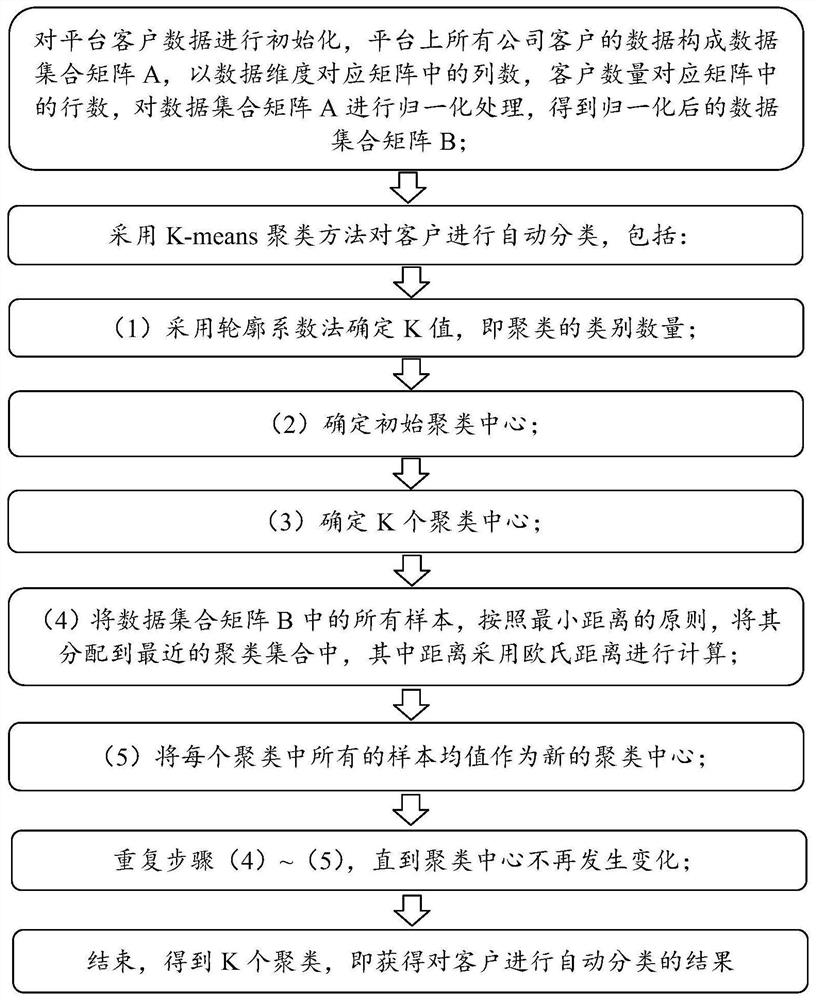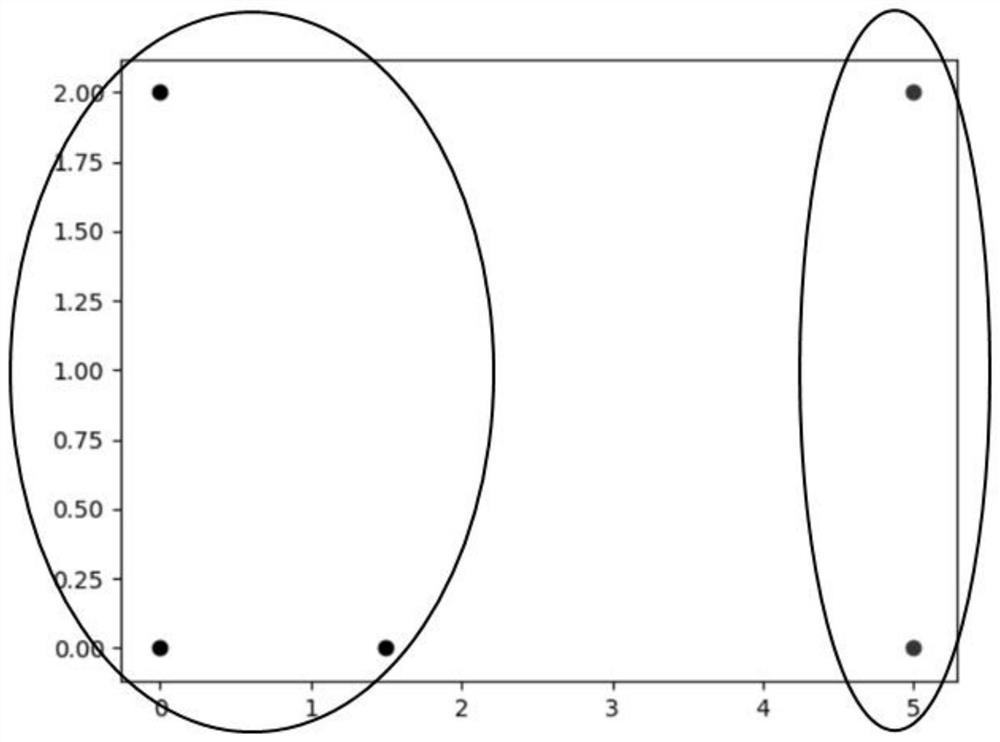Automatic customer classification method based on K-Means clustering
An automatic classification and customer technology, applied in the field of data processing, can solve problems such as poor objectivity, waste of resources, time-consuming, etc., to achieve the effect of improving customer experience, improving work efficiency, and saving customer time
- Summary
- Abstract
- Description
- Claims
- Application Information
AI Technical Summary
Problems solved by technology
Method used
Image
Examples
example 2
[0172] Example 2. Calculation example of K-Means clustering algorithm
[0173] Suppose there is data as follows:
[0174] o 1 (0, 2), O 2 (0,0),O 3 (1.5, 0), O 4 (5,0),O 5 (5, 2)
[0175] 1. Choose O 1 (0, 2), O 2 (0, 0) is the initial cluster center, namely M 1 =O 1 =(0,2), M 2 =O 2 =(0,0).
[0176] 2. For each remaining object, assign it to the nearest class according to its distance from each cluster center.
[0177] to O 3 :
[0178]
[0179]
[0180] Since d(M 2 , O 3 )≤d(M 1 , O 3 ), so the O 3 assigned to C 2 .
[0181] to O 4 :
[0182]
[0183]
[0184] Since d(M 2 , O 4 )≤d(M 1 , O 4 ), so the O 4 assigned to C 2 .
[0185] to O 5 :
[0186]
[0187]
[0188] Since d(M 1 , O 5 )≤d(M 2 , O 5 ), so the O 5 assigned to C 1 .
[0189] Update, get new class C 1 ={O 1 , O 5} and C 2 ={O 2 , O 3 , O 4}, the center is M 1 =(0,2), M 2 =(0,0). Compute the squared error criterion, for a single variance:
[0190...
example 3
[0202] Example 3. Calculation example of K value determined by contour coefficient method
example 1
[0203] Example 1: According to the result after clustering in Example 2: K=2, clustering result C 1 ={O 1 , O 5} and C 2 ={O 2 , O 3 , O 4}, where O 1 (0, 2), O 2 (0,0),O 3 (1.5, 0), O 4 (5,0),O 5 (5, 2).
[0204] 1. Calculate the degree of dissimilarity within the sample class (calculate O 1 , O 2 Intra-class dissimilarity as an example):
[0205]
[0206]
[0207] 2. Calculate the dissimilarity between sample classes (calculate O 1 ,O 2 The dissimilarity between classes is taken as an example):
[0208] Since K=2 in this example, that is, the inter-class dissimilarity is the inter-class dissimilarity between the sample and another class.
[0209]
[0210]
[0211] 3. Calculate the silhouette coefficient of the sample (calculate O 1 ,O 2 The dissimilarity between classes is taken as an example):
[0212]
[0213]
[0214] 4. Calculate the overall silhouette coefficient of the cluster when K=2:
[0215]
[0216] Silhouette coefficient p...
PUM
 Login to View More
Login to View More Abstract
Description
Claims
Application Information
 Login to View More
Login to View More - R&D
- Intellectual Property
- Life Sciences
- Materials
- Tech Scout
- Unparalleled Data Quality
- Higher Quality Content
- 60% Fewer Hallucinations
Browse by: Latest US Patents, China's latest patents, Technical Efficacy Thesaurus, Application Domain, Technology Topic, Popular Technical Reports.
© 2025 PatSnap. All rights reserved.Legal|Privacy policy|Modern Slavery Act Transparency Statement|Sitemap|About US| Contact US: help@patsnap.com



